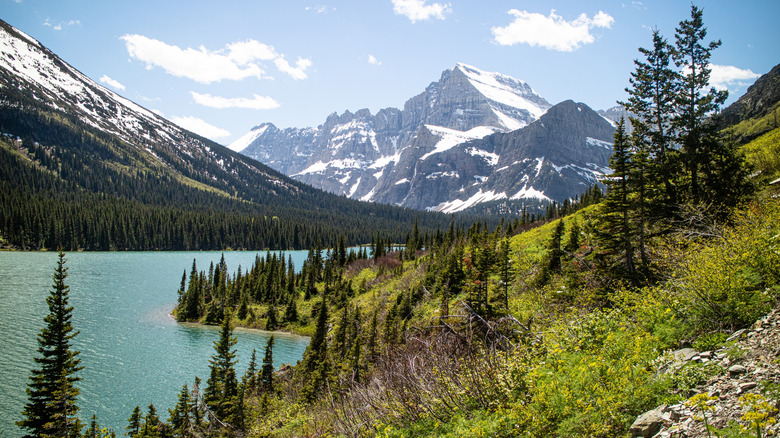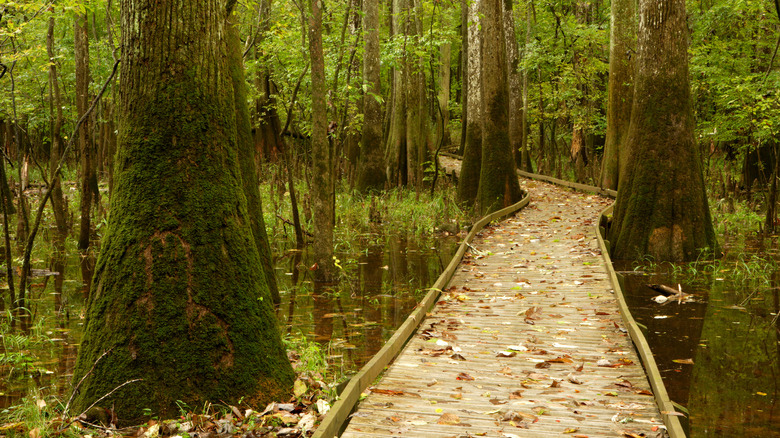An Optimized Road Trip Maps The Shortest Route Between National Parks Across America
The United States is pretty hallowed ground when it comes to road tripping. This is the land of the Blue Ridge Parkway, a fall foliage odyssey through charming mountain towns in Appalachia. It's got all the stunning stops along the Pacific Coast Highway and the iconic Route 66, that epic drive that stretches from Chicago all the way to LA. But one of the most incredible road journeys of all might be the one you've never heard of, since it's not some old-school historic route, but rather the product of some nifty calculations by AI pioneer and data scientist Dr. Randy Olson.
Yep, Olson — who's made something of a habit of applying complex mathematical solutions to road trip planning over the years — set about creating the most efficient route between all the national parks in the country. The result is an incredible 14,498-mile romp from coast to coast that would take two whole months to complete, even if you were going at speed.
As you'd expect, it's laced with sublime locations. One day, you'll be kayaking through the mangrove swamps of the Biscayne National Park on the outskirts of Miami. The next, you'll be walking amid the sweeping hardwood forests of the Congaree National Park in South Carolina. You'll see national parks on the Pacific Ocean, on the Atlantic, draped over the Rocky Mountains, and in the sun-scorched deserts. It's all of America in one fell swoop.
The making of the most optimized road trip possible
Crafting the most optimized route through every single national park in the country is no mean feat. First of all, by their very nature, national parks are often hard-to-reach, distant places. Urban reserves, like the glittering Gateway Arch on the banks of the Mississippi in St. Louis, are the exception rather than the rule. The challenge lies in mapping the way to Yellowstone, which hosts some of the most remote locations in the contiguous states, or getting over to the 400-plus islets that make up the Isle Royale National Park in Michigan.
To do that, Dr. Randy Olson envisaged his road trip conundrum as a variation on the Traveling Salesperson Problem (TSP), a classic mathematical puzzle that's all about plotting the shortest route between a given set of destinations. Here, Olson turned to a branch of applied mathematics known as operations research. Specifically, he used a TSP solver called Gurobi, which utilizes operations research to find the shortest path from A to B, or, in this case, from Kings Canyon to Sequoia National Park, or the Great Smoky Mountains to the Everglades down in Florida.
Some more tinkering around the edges was needed — Olson made the decision to focus on just the parks in the lower 48 states, for example. So, you'll just have to visit the remote and rugged Gates of the Arctic National Park way up in northern Alaska some other time, sorry! What's more, Olson's ultimate roadie was made back in 2016. There have been some additions to the NP roster since then, meaning you'll have to follow an updated, longer plan from Matador Network if you really want to check off all the sites.
Prioritize these sections if you have limited time to explore
You'd need two whole months to whiz around every national park in Dr. Randy Olson's original plan. That might be a-okay for full-time van lifers or retirees, but most will need a stack of vacation time in the bank to get it done. Thankfully, the route runs roughly in a loop around the country, and there's no set start or finish point. What's more, it's possible to pick certain sections to see some of the real natural highlights of the U.S. without committing to the whole shebang.
The natural standout is The Golden State, which lays claim to the most national parks of any American state – it counts a whopping nine in all. You can complete a perfect road trip itinerary to explore every national park in California in 1,600 miles total. Following Olson's plan, you would begin on the Nevada-California border with the salt flats and canyons of Death Valley, move across to see the strange fauna of Joshua Tree National Park, check off the big names in the Sierra Nevada — including Yosemite, of course — and then finish amid the giant redwoods of the coast.
Utah is another state that offers up a handful of parks in quick succession. Say you took five days over it, you could see a different reserve every single day, beginning with the great rust-red buttes of the Canyonlands National Park, finishing with the camping, canyoneering, and winter sunshine of Zion.


